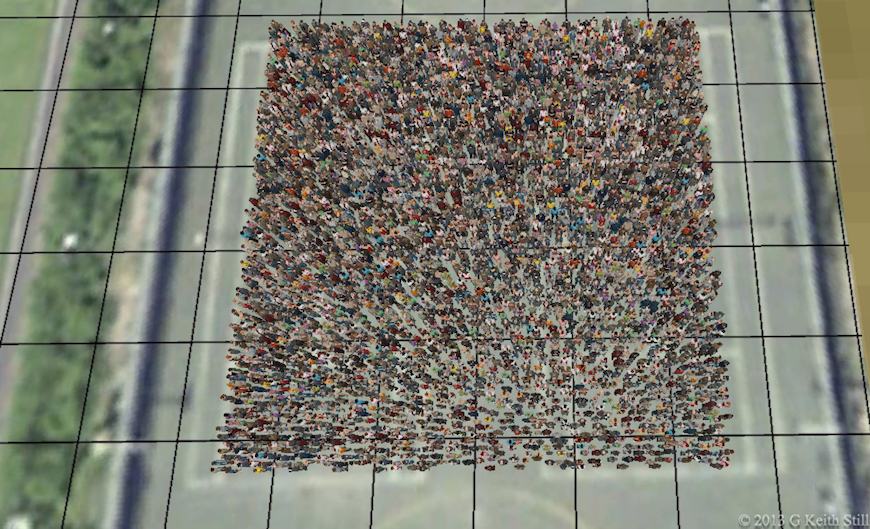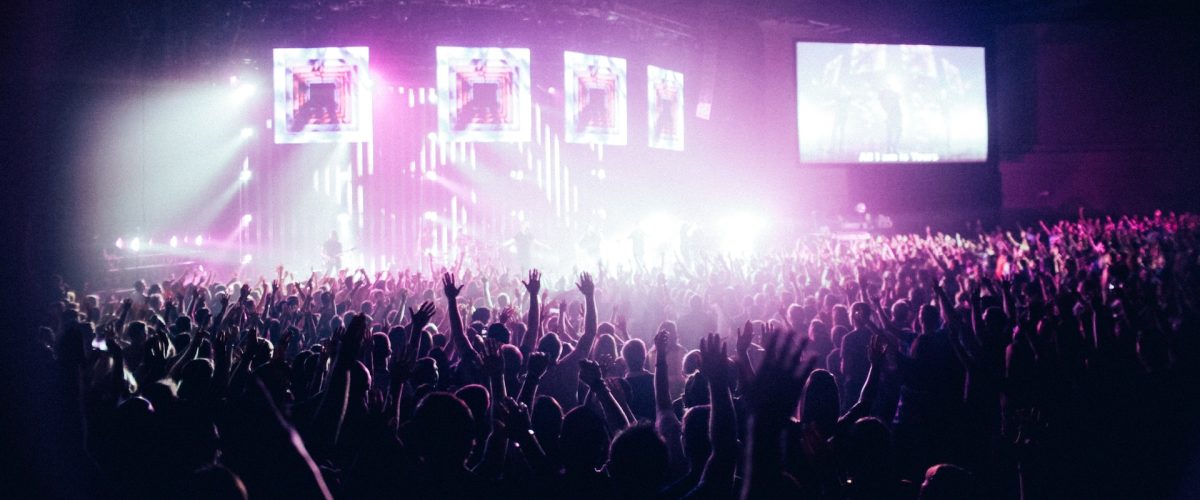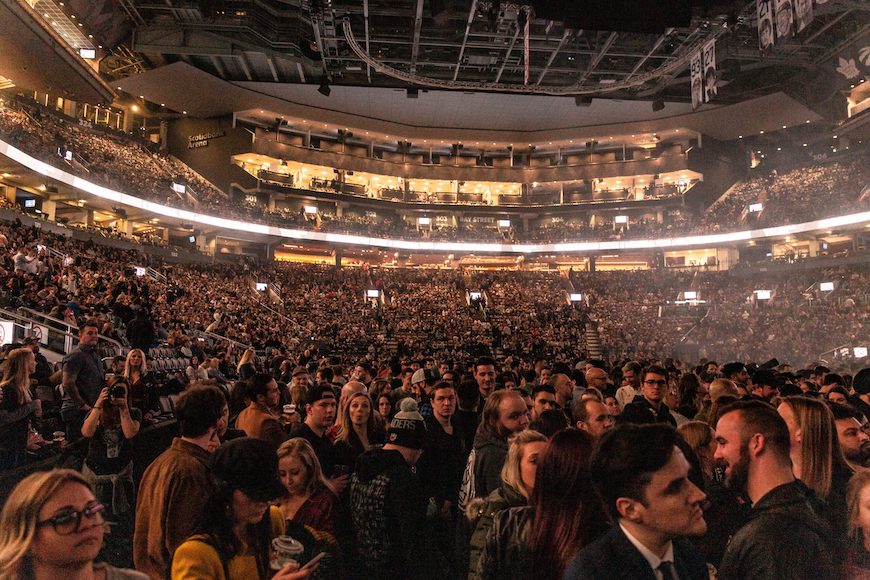After the tragedy in South Korea this past weekend, it’s time again to examine crowd management issues when planning festivals or concert production or other types of events that puts people in potentially crowded situations.
Event organizers, whether for fairs, festivals, or concerts, need to manage the health and safety risks for those attending and involved with their events. It is essential to address crowd management as part of the process for planning any entertainment event. That’s because most of the deaths and injuries at large events are due to the crowd behavior itself and not the incident that triggered the behavior.
It’s a very topical subject now as larger events are happening again. In the United States with open carry laws, the equivalent of yelling “fire” at a theater, is “he has a gun” at a large gathering such as a music festival or county fair. This is one trigger and there are many others that can cause people to react in panic and attempt to escape as part of a crowd swarm.
People act differently when they’re part of a large crowd of faceless individuals. Strong emotions such as joy, anger, excitement, and fear can quickly spread and grow into dangerous behavior. Such a crowd or herd mentality often results in these situations and could lead to dangerous behaviors that result in tragedy.
As a crowd swarm encounters a jam or bottleneck, pressures are exerted from both the front and the back of the crowd. The result is that the forces are so strong for people in the crowd that drawing a breath becomes impossible. People die from suffocation (lack of oxygen) not from being trampled as most think.
Emergency Planning for Festival and Concert Production
While you hope that everything goes smoothly and no problems arise, having a good emergency plan for your festival or concert is a way to minimize problems should an adverse incident take place. Crowd management should be a big part of that emergency plan.
What should an emergency festival plan include?
-
- Risk Assessment
- Crowd Flow Planning
- Security
- Emergency Communications Plan
Risk Assessment:
Once you know your event’s venue, type of event, and audience you can begin your risk assessment. The venue, event types and likely attendees are major issues when it comes to assessing the kind and severity of potential risks to your event. Each of these three elements needs to be individually assessed to complete a risk assessment for your concert or festival. That’s how you prepare for the unknown.
-
- Audience: Understanding the number and type of people who will be most likely to attend your concert or festival will help you assess the risk from that group. Young people attending a large RAP concert will react very differently to the music than an older crowd attending an Oldies Concert.
- Event Type: Behaviors will also be heavily influenced by the kind of event that is taking place. A craft festival will have different issues than a large concert. A political rally will differ from a grand opening. You get the picture.
- Venue: Different venue settings have different risks associated with them. Often time egress and ingress are important considerations and present different risks for events. Indoor or outdoor settings have some different issues. Other things to consider are occupant load, unsafe spaces where crowds could pile up, obstacles, poor lighting, slipping hazards, or other hazards to assess and mitigate.
 Crowd Flow Planning
Crowd Flow Planning
Knowing the above, it’s important to plan how people will move at the event as they ingress, travel to restrooms or vendors as well as egress after the event. How will the crowd move if something happens that causes panic? Swaying and surging are common at some kinds of concerts. While they don’t normally cause problems, they can escalate into crushing and trampling situations without actions to make sure they don’t get out of control.
Emergency Plan for Your Festival or Concert
From the risk assessment you can plan for possible adverse scenarios and how to minimize the impact on your event and the people involved.
There are lots of good examples of Incident (emergency) action plans. You can find a guide to preparing one here by Stratsite which provides an emergency preparedness planning app. Here’s another example of a plan by the National Cherry Festival.
Other Important Considerations When Producing a Concert or Festival Operational Plan
A good plan is only good if you have the resources on site to carry it out should something happen. Too often operations or emergency plans are boilerplate copies of other event’s plans without real thought to making sure all the t’s are crossed and the i’s dotted. The Astroworld Festival had 56-page operations plan by Live Nation that addressed identifying and dealing with potentially dangerous crowd behavior. While the plan had the right words, the failures in carry it out resulted in 10 deaths and numerous injuries.
Besides the plan itself, you need ways to implement it.
-
- Trained People
- Communication strategies.
Trained People:
Security personnel are the key players in crowd management. They are responsible for implementing the crowd management steps in the event’s operations plan. They are also responsible for crowd control procedures should something happen. Don’t skimp on the number of security personnel needed for the event after you have done your risk assessment.
Often, we see “crowd management” and “crowd control” used interchangeably. They have two different meanings for those who deal with crowds. The first deals with handling crowds and preventing issues, and the second deals with dealing with crowds after an incident. One is preventive, the other reactive.
Festival staff and volunteers also play a role in crowd management. For them to function appropriately, they need sufficient training in the festival operations plan and crowd management procedures. They are more eyes and ears to spot potential crowd issues before they become a problem.
Communication Strategies:
Festival and concert organizers need emergency communications strategies. One is directed at event “insiders” to inform event security, event staff and emergency personnel of issues that may arise and steps that need to be taken to protect attendees. Two-way radios with different channels for different levels of escalation are a good way to handle this. With the advent of event apps, push notifications can be sent to different incident contact lists as well. Using both is best when available since one is voice and the other is text to prevent any confusions that may arise.
The other needed communication strategy is with attendees to keep them apprised of things they should know about as well as to direct attendees to take specific actions if a bad incident should occur. Such communication tactics should include event signage large enough to be seen without crowding to read them; Interactive billboards such as LED walls where messages can change as needed; PA systems such as used at concerts; and push notifications to attendees using a feature of an event app.
Warning Sign: Crowd Density
One of the flashing warnings signs that festival, fair or concert organizers need to be paying attention to is crowd density in the venue or parts of it. If density (the number of people in a space, e.g., per square yard or meter) gets too high, then the chances of a crowd-related tragedy increase dramatically.
Entertainment events, including music shows, festivals and cultural events account for 44% more crowd disaster incidents compared to sport events. This illustrates that potentially double the amount of crowd incidents happen in outdoor events than in indoor venues and stadiums.
Research suggests that when density increases above 5 people per square meter (ppm²) threshold, the crowd and the people who compose it take on new characteristics. More physical contact means it’s harder for each person to keep a wider stance, making it much easier for people to tip over. At this point, members of the crowd lose individual movement and the crowd behaves as one entity.

“When bodies are touching, that high energy and density can give rise to these surges and crowd collapses,” Still said.
When density reaches this critical level, physical movement is almost impossible causing “crowd turbulence” The high pressures that develop within the crowd are powerful enough to bend steel barriers and push down brick walls. People are unable to control their bodies due to pressure, as each breath is exhaled, and pressure prevents inhalation causing slow death by asphyxiation.
I had my own scary experience while attending a Mardi Gras parade and celebration with my wife. As time went on the area where we were became so crowded we could hardly move. We tried to leave and realized that we would be lucky to extricate ourselves from the scene. We had to abandon our folding chairs to be able to move through the crowd to a safe place. The feeling of losing control of your own movements is still a vivid memory to this day many years later.
The key to preventing a disaster is to give people sufficient information and space. Organizers must watch the crowd density and, if it starts to get high, take steps to slow or stop the flow of people entering the area. Performers should also be asked to instruct their audience to take a step back when necessary to prevent things from getting out of hand.
Keeping people safe means being able to spot when a crowd is becoming too dense, but that’s trickier than it sounds. Among other things, he said, it depends on the angle of view, say from a drone or stage
If anything, know that If crowd density is regulated, then the risk to the crowd is regulated
Conclusion:
The safety of the people attending your festival or concert is the responsibility of the event organizer. The way to do that is by planning, including a risk assessment that translates into an operational emergency plan for various adverse scenarios that could take place. Implementing the plan requires a good security force with staff and volunteers also trained on the plan.
Besides people and a plan, you absolutely need a way to share instructions and information with your event team as well as those attending the event. Lastly, regulating crowd density is regulating risk to the crowd.

 Crowd Flow Planning
Crowd Flow Planning


